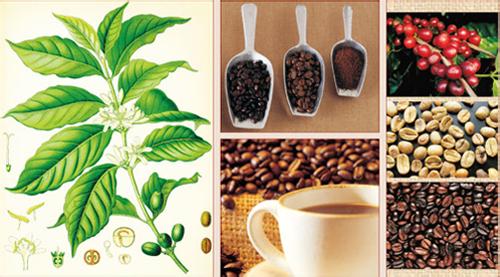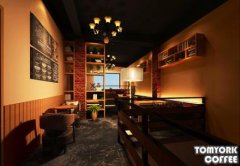A brief introduction to the cultivation of Tarazhu Coffee Wind in Costa Rica with High acidity, Geographic location, Climate and altitude

Coffee is grown in areas between 1200 and 1900 meters above sea level. The soil type is mainly composed of volcanic ash deposits, which makes the pH of the soil acidic. Most plantations in the region are planted with natural shade for a five-month harvest period, from November to March of the following year. Harvesting coincides with the dry season, ensuring that coffee berries of uniform maturity and high quality can be harvested. The dry season provides conditions for sun treatment. Some green beans are also treated in the sun.
The combination of altitude, climate and varieties allows the coffee quality of this region to be highly recognized in the world's most demanding markets. High body, clean and consistent high acidity, rich and distinct aromas, with hints of chocolate
Sunnyside, the highest point in Tarrazu, is the area that receives the first rays of sunlight at sunrise. It is called LIano Bonito of Leon Cortes! Bourbon, Geisha, Caturra and Catuai coffee varieties are grown on the estate and are treated with 100% water, honey and natural sun. The coffee beans of Estates de la Sana are processed by the renowned Don Mayo processing plant in Costa Rica, which is good at improving the quality of coffee and retaining its uniqueness, i.e. the different flavors caused by the respective microclimates such as altitude, soil, rainfall, temperature, etc., in order to grow, harvest, process and export high-quality coffee in harmony with the environment. Shenhua Manor uses very strict standards to control the cultivation environment and processing process of coffee. It is very strict! Maria Auxiliadora Bonilla, daughter of the farm operator, is a barista and the 2013 WBC Costa Rica champion. They have a professional coffee cup testing laboratory. Every batch of green beans is tested by cup testing to confirm that the flavor is impeccable.
Green coffee bean processing method-honey processing. Honey processing originated in Costa Rica. Simply speaking, honey processing is the way to treat coffee with pectin and endocarp after removing peel and meat. The key to distinguishing different honey treatments lies in the treatment choice of the remaining pectin: the proportion of pectin retained and the drying speed and method.
White Honey: About 40% of pectin is removed; the drying method requires the most direct heat absorption, receiving the most light drying, lasting about 8 days to reach the stable value of moisture content.
Red Honey: About 25% of pectin is removed; compared to yellow honey, it takes longer to dry and reduces direct sunlight exposure, even using a shade for about 12 days.
Black Honey: Almost no pectin is removed; drying takes the longest time, lasting at least 2 weeks, using a cover to avoid too strong sunlight, prevent drying too fast, and make sugar conversion more complete Coffee is grown at an altitude of 1200 meters to 1900 meters. The soil type is mainly composed of volcanic ash deposits, which makes the pH of the soil acidic. Most plantations in the area are planted with natural shade
Red honey treatment is a unique processing method of coffee. Coffee fruit is actually like a red cherry-like fruit after picking. Coffee beans are coffee seeds wrapped by coffee fruit peel, pulp and inner fruit membrane. Mature coffee fruits should be treated immediately after picking to avoid corruption. Coffee green bean treatment is to remove coffee exocarp and pulp, and then take out seeds through fermentation. Generally, there are four common treatment methods on the market: sun treatment, washing treatment, semi-washing treatment and honey treatment.
This coffee bean treated with red honey gives full play to the sweetness of coffee. The fragrance of apple and carambola in the front section is very rich, and the creamy chocolate taste in the back section is also eye-catching. This is a fine coffee worth tasting.
The elevation of the production area is 900-1600 meters, 80% of which is located at 1000-1400 meters. This coffee is known for its excellent quality and rich and balanced taste. Even coffee from the region's Laminieta farms is thought to have a flavor similar to Blue Mountain coffee.
Costa Rican coffee is mostly washed, honey treated beans are not common, honey treatment in small shops inherits the balanced taste of Costa Rican coffee, while bringing more surprises in alcohol and richness. Costa Rica coffee has a unique aroma, similar to flowers and faint fruit aroma, but the feeling is not turbid, but fresh and rich, as if the whole body can penetrate the skin Costa Rica coffee is definitely grown in a superior environment of fine. There are no fluctuations in the economic environment brought about by war, there is strong support from the government, there is a climate and altitude suitable for the growth of fine coffee, Costa Rica SHB can grow fine coffee at an altitude of about 1500 meters, volcanic ash soil provides nutrients for coffee growth, and there are enthusiastic and serious coffee producers. One of the most notable is Costa Tarrazu, produced in the Tarrazu region near San José, the capital. The production area benefits from the warm and humid air flow of the Pacific Ocean, with obvious dry and wet seasons. The weak acid volcanic soil is rich in organic matter, which creates good conditions for the root development of coffee plants.
Green coffee beans processing method-honey processing. Honey processing originated in Costa Rica. Simply speaking, honey processing is the way to treat coffee with pectin and endocarp after removing peel and meat. The key to distinguishing different honey treatments lies in the treatment choice of the remaining pectin: the proportion of pectin retained and the drying speed and method.
White Honey: About 40% of pectin is removed; the drying method requires the most direct heat absorption, receiving the most light drying, lasting about 8 days to reach the stable value of moisture content.
Red Honey: About 25% of pectin is removed; compared to yellow honey, it takes longer to dry and reduces direct sunlight exposure, even using a shade for about 12 days.
Black Honey: Almost no pectin removal; longest drying time, at least 2 weeks, use cover, avoid too strong sunlight, prevent drying too fast, allow sugar conversion to be more complete Elevation and soil:
Important Notice :
前街咖啡 FrontStreet Coffee has moved to new addredd:
FrontStreet Coffee Address: 315,Donghua East Road,GuangZhou
Tel:020 38364473
- Prev

A brief introduction to the Market Price of Costa Rican Tarazhu Coffee varieties with mellow taste
Costa Rican coffee is full of Arabica beans, washed with water, its style is bright, fragrant, clear as wind chimes swaying in the breeze, mild acidity and sweetness. Because of the sweetness, even if the coffee gets cold, it tastes very good, which is a major feature of Costa Rican coffee. Therefore, it is recommended that when you taste Costa Rican coffee, only a small amount should be added.
- Next

A brief introduction to the treatment method of grinding degree and baking degree of Costa Rican Tarazhu coffee beans
Costa Rica has only 3.5 million people but 400m coffee trees, and coffee exports account for 25 per cent of the country's total exports. Costa Rica's volcanic soil is very fertile and well drained, especially in the central plateau CentralPlateau, where the soil consists of successive layers of ash and dust. Costa Rica was therefore the first in Central America because of commercial value
Related
- Detailed explanation of Jadeite planting Land in Panamanian Jadeite Manor introduction to the grading system of Jadeite competitive bidding, Red bid, Green bid and Rose Summer
- Story of Coffee planting in Brenka region of Costa Rica Stonehenge Manor anaerobic heavy honey treatment of flavor mouth
- What's on the barrel of Blue Mountain Coffee beans?
- Can American coffee also pull flowers? How to use hot American style to pull out a good-looking pattern?
- Can you make a cold extract with coffee beans? What is the right proportion for cold-extracted coffee formula?
- Indonesian PWN Gold Mandrine Coffee Origin Features Flavor How to Chong? Mandolin coffee is American.
- A brief introduction to the flavor characteristics of Brazilian yellow bourbon coffee beans
- What is the effect of different water quality on the flavor of cold-extracted coffee? What kind of water is best for brewing coffee?
- Why do you think of Rose Summer whenever you mention Panamanian coffee?
- Introduction to the characteristics of authentic blue mountain coffee bean producing areas? What is the CIB Coffee Authority in Jamaica?

